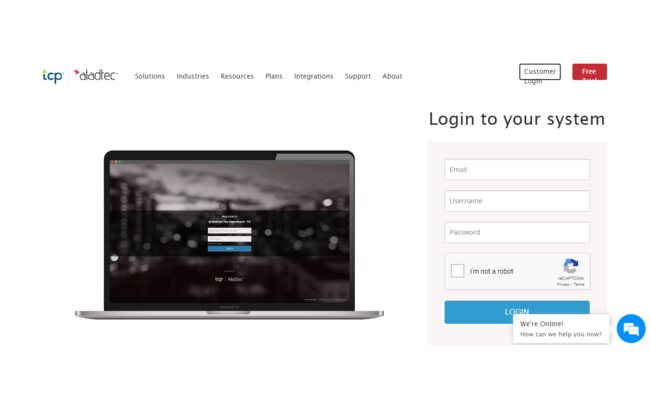The Risks Associated With Hard Money Loans And How To Mitigate Them
Picture diving into a real estate deal like jumping into a fast-moving river—you’re thrilled, but those rapids? They’re the risks tied to hard money loans. These non-traditional financing options, often called bridge financing, are a lifeline for investors chasing fix and flip or construction projects. Unlike a stuffy bank, private lending moves at lightning speed, offering fast cash with no credit check. But here’s the rub: that high-interest rate can feel like a punch to the gut.
In 2025, with markets as unpredictable as a summer storm, these loans carry dangers that could sink your ship if you’re not careful. Why do folks still flock to them? They’re quick, collateral-based, and perfect for distressed properties or foreclosure flips. Still, the pitfalls—like sky-high rates or short-term deadlines—can leave you scrambling. So, how do you navigate these hazards without losing your shirt? Let’s dive in and unpack the challenges.
Navigating the Wild Waters of Hard Money Loans
1. Tackling Sky-High Interest Rates
Those high interest rates are the elephant in the room with a hard money loan. They often come with points—think 2-5% tacked on upfront. In 2025, typical rates might hit 10-15%, far steeper than a conventional mortgage. It’s like paying for a sports car but driving a clunker. The danger? If your rental flow or flip flops, you’re drowning in debt.
Also Read: Small Business Loans For Startups
So, how do you stay afloat? Shop around for lenders like you’re hunting the best deal on California wine. Crunch the numbers to ensure your DSCR (debt service coverage ratio) can handle the high-cost terms. Got a property in Los Angeles or Houston? Tap local brokers who know the marketplaces. Better yet, plan to refinance into a long-term mortgage once your project stabilizes. That’s your safety net to keep those pricey rates from eating your lunch.
2. Managing Short-Term Loan Deadlines
The short-term nature of hard money loans—usually 6 to 24 months—is like borrowing a buddy’s truck for a quick move; you gotta return it fast. In 2025, real estate investment timelines can slip with permitting snafus or labor shortages. If your rehab or renovation drags, that balloon payment could hit like a freight train. What’s the safeguard? Lock in a calculated exit strategy before signing anything. Will you sell the home or refinance into a permanent loan?
Also Read: Advantages Of Home Renovation Loans
Map project timelines like a battle plan, leaving room for unforeseen issues. Got a multifamily or commercial deal in Florida? Nail down contractors early to avoid default. Here’s a management tip: Keep cash reserves handy—think of it as a lifeboat for rough seas. That’s how you dodge the default trap and keep your deal on track.
3. Overcoming Lower LTV Ratios
Lower LTV ratios are a real hazard with hard money lending. Lenders often cap loan-to-value at 60-75%, so you’re coughing up a big down payment. It’s like needing a fat stack of cash just to play the game. For beginners in 2025, scraping together equity for a residential or retail property feels like climbing Everest. Why’s this a concern? A lowball appraisal leaves you with a shortfall.
Also Read: Avoid These Mistakes If You Are Applying For A Business Loan
How do you beat this high-leverage issue? Get a rock-solid valuation from a reputable appraiser—don’t cut corners. Hunt networks for lenders offering higher LTVs, maybe even 100% in rare cases. In Texas, where land deals are hot, check boutique finance firms. Why not explore a partnership or joint venture to split the cost? That’s a protection strategy to keep you calling the shots in your deal.
4. Dodging Regulatory Curveballs
Regulatory risks can blindside you like a rogue wave. Hard money lending isn’t as tidy as bank funding, and in 2025, non-conforming loans face tighter scrutiny. Ever feel like you’re on a tightrope with no net? Shady terms or hidden fees can turn your deal into a nightmare. How do you mitigate this risky mess? Team up with reputable direct lenders or fintech platforms—think crowdfunding or peer-to-peer with transparent portfolios.
Also Read:
Got a deal in bad shape, like a bankruptcy workout? Hire a lawyer to vet the contract for deed or wraparound clauses. Stay sharp on Reg D, 506(b), or 506(c) rules if you’re pooling investor cash. A precaution? Keep records tight—think of it as locking your doors at night. That’s your defense against regulatory pitfalls that could derail your plans.
5. Weathering Economic Storms
Economic uncertainty in 2025 is like fog rolling in—you can’t see what’s next. Hard money borrowing fuels speculative markets, but what if rates spike or buyers vanish? Your value-add repositioning or stabilization plan could hit a brick wall. A mixed-use or industrial project might lose demand, leaving you with no cash-out options.
How do you manage this high-risk concern? Dig into market research like a detective. Got a site in California? Study rental trends and absorption rates. Build buffers—maybe stash capital for interest-only payments. Ever thought of rent-to-own or lease-option deals to keep cash flowing? That’s a mitigation technique to ride out the storm. Don’t sleep on contingency plans—like switching to long-term hold if sales stall. That’s your armor against market swings that threaten your deal.
Protecting Your Collateral
Collateral concerns can keep you up at night. Hard money is property-backed, so your asset—say, a distressed office building—is the lender’s security. But what if your rehab flops or the market tanks? It’s like betting your favorite guitar in a poker game. In 2025, foreclosure risks loom if you can’t repay. A default could mean losing equity or facing a deficiency judgment.
How do you protect yourself? Set a realistic budget for renovation—no fairy-tale numbers. For ground-up development, get insured against delays. Got a portfolio of rental properties? Try cross-collateral to spread the risk. A management strategy? Keep open lines with your lender—if you’re slipping, negotiate a forbearance or modification. That’s like hitting the brakes before a crash. Proactive communication is your shield against collateral loss.
Balancing High-Leverage Tightropes
High-leverage deals are a tightrope walk. Hard money loans often max out LTVs, leaving you over-leveraged. It’s like stacking plates too high—one slip, and it’s a mess. In 2025, spec home builders or mezzanine financing users face this hazard. If rents or sales don’t cover debt, you’re in hot water. How do you reduce this risk? Keep leverage low—aim for conservative LTVs if possible.
For acquisition or A&D loans, team up with syndication groups to share the load. Got a niche project, like agricultural or timberland? Use preferred equity to cushion debt. A tip? Stress-test your pro forma—what if income drops 20%? That’s your reality check. Staying disciplined builds a moat around your deal, keeping over-leverage from pulling you under.
Sidestepping Recourse Loan Traps
Non-recourse loans sound like a dream—no personal liability, right? Not so fast. In 2025, hard money lenders might sneak in recourse carve-outs, especially for subprime or non-QM deals. It’s like thinking you’re safe in a storm, only to find leaks everywhere. If you’re flipping a retail strip or building multifamily, a default could hit your personal assets.
How do you sidestep this trap? Read the fine print—twice. Get a lawyer to decode terms like junior liens or second position debt. For high-yield opportunistic plays, stick to non-recourse lenders with clean records. A prevention tactic? Cap your exposure—limit loans to one project at a time. That’s like keeping eggs in separate baskets. Clarity on terms is your lifeline to avoid getting burned by recourse surprises.
Defusing Balloon Payment Bombs
Balloon payments are a beast to tame. Hard money loans often end with a lump-sum repayment, like a tidal wave at maturity. In 2025, fix and flip investors or pre-development borrowers might misjudge their exit. Ever feel like you’re racing the clock? That’s the pressure of a balloon due date. How do you manage this high-stakes game? Line up a bridge-to-sale or bridge-to-refinance plan early.
For raw land or entitled parcels, secure a takeout lender before closing the hard money deal. Got a vertical construction project? Track milestones like a hawk to hit sale or lease-up targets. A mitigation strategy? Stash extra cash for a top-up if proceeds fall short. That’s your parachute for a soft landing when balloon payments loom.
Choosing Trustworthy Brokers
Broker issues can muddy the waters. In 2025, finding a solid facilitator for hard money loans is like picking a guide through a jungle. Some brokers push shady deals or charge hefty fees, leaving you high and dry. For occupied properties or cash-out refinances, a bad broker could tank your deal. How do you steer clear? Vet brokers like you’re hiring a contractor—check reviews, ask for references.
In regional markets like Texas or Florida, lean on local networks for trusted names. A protection tip? Compare quotes from multiple marketplaces—don’t grab the first offer. Ever wonder if you’re getting a good deal? Run the numbers yourself or use online tools. That’s how you keep brokers honest and your deal safe from their misfires.
Riding Out Market Volatility
Market volatility is a wild card. Hard money loans fuel speculative ventures—think ground-up retail or recreational land deals. But in 2025, what if demand crashes? It’s like building a sandcastle before a storm. Your bridge-to-permanent plan could fizzle, leaving you with no exit. How do you brace for this uncertainty? Study trends—are office leases holding in Houston?
Is multifamily hot in Los Angeles? Diversify your portfolio—mix rental flow with flip profits. A mitigation tactic? Secure gap financing to cover shortfalls. For high-risk plays, like unentitled parcels, lock in profit-sharing or revenue-sharing terms with investors. That’s like planting extra seeds in case one crop fails. Flexibility is your key to surviving market waves that could swamp your deal.
Avoiding Construction Delays
Construction delays are a silent killer. Hard money loans for rehab or new builds—like spec homes or mixed-use projects—hinge on tight schedules. In 2025, supply chain snags or permitting hiccups could derail your timeline. It’s like missing a train by seconds. A delayed flip risks default, especially with interest-only terms. How do you fight this battle?
Overestimate timelines—pad your schedule like a cozy blanket. For infrastructure or horizontal work, lock in vendors early. Got a builder in California? Double-check permits before breaking ground. A management hack? Use software to track progress—stay ahead of snags. Don’t skip insurance for delays—it’s your umbrella in a storm. That’s how you keep construction risks from sinking your deal and pushing you off course.
Resolving Appraisal Disputes
Appraisal disputes throw a wrench in plans. Hard money loans are asset-based, so the lender’s valuation of your property—like a ranch or farm—sets the loan amount. In 2025, appraisers might lowball, especially for unconventional assets like timberland. It’s like being told your prized painting is worth pennies. A low appraisal means less cash, forcing a scramble.
How do you counter this risk? Hire your own appraiser for a second opinion—it’s worth the cost. For specialty properties, like mixed-use or industrial, pick lenders with niche expertise. A precaution? Gather comps—recent sales in Florida or Texas—to bolster your case. Feel like you’re fighting city hall? Stay persistent. That’s your ticket to fair valuations and better terms for your deal.
Ensuring Lender Reliability
Lender reliability matters big time. Not all hard money lenders are created equal—some are shaky, others solid. In 2025, a flaky lender could pull funding mid-project, leaving you stranded. It’s like your ride bailing halfway to the party. For urgent deals—like same-day closes or instant cash—this risk spikes. How do you vet lenders? Dig into their track record—check reviews on fintech platforms.
For regional players in Houston or Los Angeles, ask investors near me for recs. A protection strategy? Get pre-approval letters to confirm commitment. Got a complex deal, like cross-collateral or blanket loans? Stick with established firms. That’s your insurance against lender flops. Trust but verify—it’s the name of the game to keep your deal safe.
Perfecting Your Exit Strategy
Exit strategy slip-ups can bite hard. Hard money loans need a clear path to repayment—whether selling, refinancing, or leasing. In 2025, misjudging your exit—like banking on a quick flip in a slow market—is like missing the last bus home. For bridge-to-sale or bridge-to-refinance deals, timing is everything. How do you nail it? Model multiple scenarios—what if sales lag?
For rental properties, lock in tenants early to boost DSCR. Got a development in Texas? Secure a takeout lender for permanent financing. A mitigation hack? Build relationships with investors or syndicators for backup capital. Wonder how to get a good exit? Stay nimble—pivot to hold or rent if plans shift. That’s your roadmap to success without crashing.
Keeping Returns Realistic
Overestimating returns is a classic fumble. Hard money investors—especially newbies—sometimes dream big, expecting flips or rentals to print money. In 2025, market shifts could slash profits, leaving you short. It’s like counting chickens before they hatch. For value-add repositioning or recapitalization, rosy projections spell trouble.
How do you ground your expectations? Run conservative numbers—factor in higher costs, lower rents. For multifamily or office deals, stress-test cash flows. Got a spec project? Consult local experts in Florida or California. A management tip? Build in buffers—say, 15% extra for repairs. Ever ask what are the safest bets? Stick to proven markets and realistic goals. That’s how you keep dreams from crashing and returns in check.
Avoiding Legal Quicksand
Legal snags can ambush you. Hard money loans for creative deals—like seller financing or contract for deed—can spark disputes. In 2025, a sloppy agreement might trigger lawsuits, especially with junior liens or mezzanine debt. It’s like signing a deal in quicksand. How do you stay safe? Hire a sharp attorney to review terms—no shortcuts.
For non-bank funding, like crowdfunding or peer-to-peer, double-check compliance with Reg D. Got a complex structure, like profit-sharing? Clarify rights upfront. A prevention hack? Record all agreements—even verbal ones. Feel like lawyers slow things down? They’re your guardrails against legal potholes. That’s how you build trust and avoid courtroom drama that could tank your deal.
Budgeting Without Blunders
Underestimating costs busts budgets fast. Hard money loans for rehab or construction—like fix and flip or ground-up retail—can spiral. In 2025, material prices or labor shortages might jack up expenses. It’s like planning a picnic but forgetting the food. A blown budget risks default, especially with high LTV terms. How do you plug this leak? Get detailed quotes from contractors—no guesses.
For infrastructure or vertical work, add a 20% cushion. Got a multifamily deal in Houston? Track costs weekly. A management trick? Use software to monitor spending—it’s your dashboard for control. Wonder is it safe to cut corners? Don’t—quality saves cash long-term. That’s your blueprint for staying on track and keeping costs in line.
Vetting Partners Wisely
Partnership risks sneak up fast. Hard money loans often pair with syndication or joint ventures—like crowdfunding for a spec home. In 2025, a shaky partner could derail your deal, especially in high-stakes markets like Los Angeles. It’s like teaming up for a relay but dropping the baton. How do you vet partners? Check their track record—past deals, references.
For profit-sharing or revenue-sharing terms, spell out roles in writing. Got a complex project, like mixed-use repositioning? Assign clear duties—no overlap. A protection tactic? Cap partner control—limit their say in key moves. Ask does a broker help here? They can—but choose wisely. That’s how you keep partnerships smooth and deals alive without friction sinking your ship.
Navigating Tax Minefields
Tax implications hide like traps. Hard money loans—especially for rental flow or flip profits—can trigger tax hits in 2025. Points, interest, or balloon payments might not deduct fully, per IRS rules. It’s like finding extra fees at checkout. For multifamily or commercial deals, capital gains could sting. How do you soften the blow? Consult a tax pro early—before closing the loan.
For value-add repositioning, track expenses tightly for write-offs. Got a portfolio deal? Explore 1031 exchanges to defer taxes. A mitigation hack? Set aside cash for tax bills—don’t spend every dime. Wonder how to invest smart? Plan taxes like moves in chess. That’s your path to keeping more profit and avoiding tax surprises.
Easing Psychological Stress
Psychological stress is real stuff. Hard money loans—with tight terms and high stakes—feel like juggling torches. In 2025, investors chasing quick flips or spec deals might burn out, especially if defaults loom. It’s tough keeping cool under pressure. How do you ease the load? Build a support team—advisors, brokers, mentors.
For complex projects, like ground-up retail, delegate tasks—don’t solo it. A management tip? Schedule breaks—step back to think clear. Got a deal near me in Florida? Join investor groups for camaraderie. Ask what’s the best idea to stay sane? Balance—mix work with life. That’s your anchor against stress, keeping you sharp and focused through the grind.
Charting a Safe Course Forward
Hard money loans are a powerful tool for real estate hustlers in 2025, but they come with baggage. From sky-high rates to balloon deadlines, the risks feel like dodging bullets. Yet, smart moves—vetting lenders, planning exits, padding budgets—tame the beast. Think sailing rough seas: steer careful, watch the horizon, keep a lifeboat ready. Whether flipping in Houston, building in California, or chasing rentals in Florida, stay sharp, lean on experts, never bet the farm. Got dreams to invest? Hard money sparks them—play it safe. What’s your next move?




